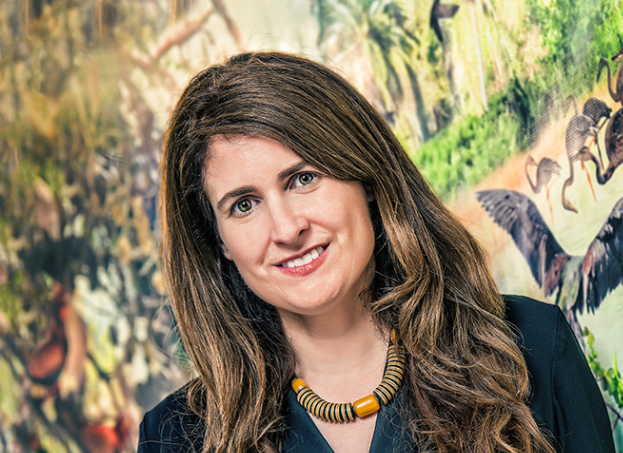
Paleo Sleuth
for Howard Hughes Medical InstituteJulia Clarke’s interests were eclectic from the start. At nine she read Lost Horizon, by John Hilton, and decided she wanted to live out her days as a writer buried in a tiny, hidden village in the Himalayas.
“When I was 15, I told my parents I wanted to go to Tunisia – I needed to see Carthage,” she says.
Her parents never took her there, but they did go to Morocco and Italy. In high school, she got into sculpture and volunteered on archaeology sites where she studied ancient Polynesian culture on Hawai’i and early humans in the Mediterranean Basin.
At Brown University, she created her own major around the history of science and comparative Spanish literature, and then planned to work toward a PhD in philosophy of science and settle into a career of pondering the arc of human discovery.
But that was before she started digging for bones.
Today, Clarke is one of the world’s leading experts on the branch of dinosaurs that eventually became birds – and she’s as eclectic as ever. When you enter her office on the Austin campus of the University of Texas, you think you’ve come upon either a lifelong bird fanatic or a dinosaur fan who never grew up. Her walls are covered with elegant sketches of sauropod bones and vintage paintings of birds. Several plastic and cloth toy dinosaurs perch in her window.
But you would be wrong. “I was not a dinosaur fangirl. Or a bird one,” she says, chuckling at the toys. The toys – which she’s picked up around the world – aren’t for her amusement, but rather serve as a reminder of all humanity’s fascination with these creatures. “What’s my favorite dinosaur?” Clarke asks, with a shrug. “It’s the one I’m working on right now.”
Clarke wants to understand how dinosaurs became birds and what that evolution tells us about modern-day birds. But rather than focus on just one piece of this paleontological puzzle, she asks broad, far-ranging questions about movement, coloration, and, most recently, vocalizations. Her study requires complex collaborations with all kinds of experts outside of paleontology, such as biologists, geneticists, and engineers. But most of all it requires a nimble, eclectic mind.
(For the full story click here)
